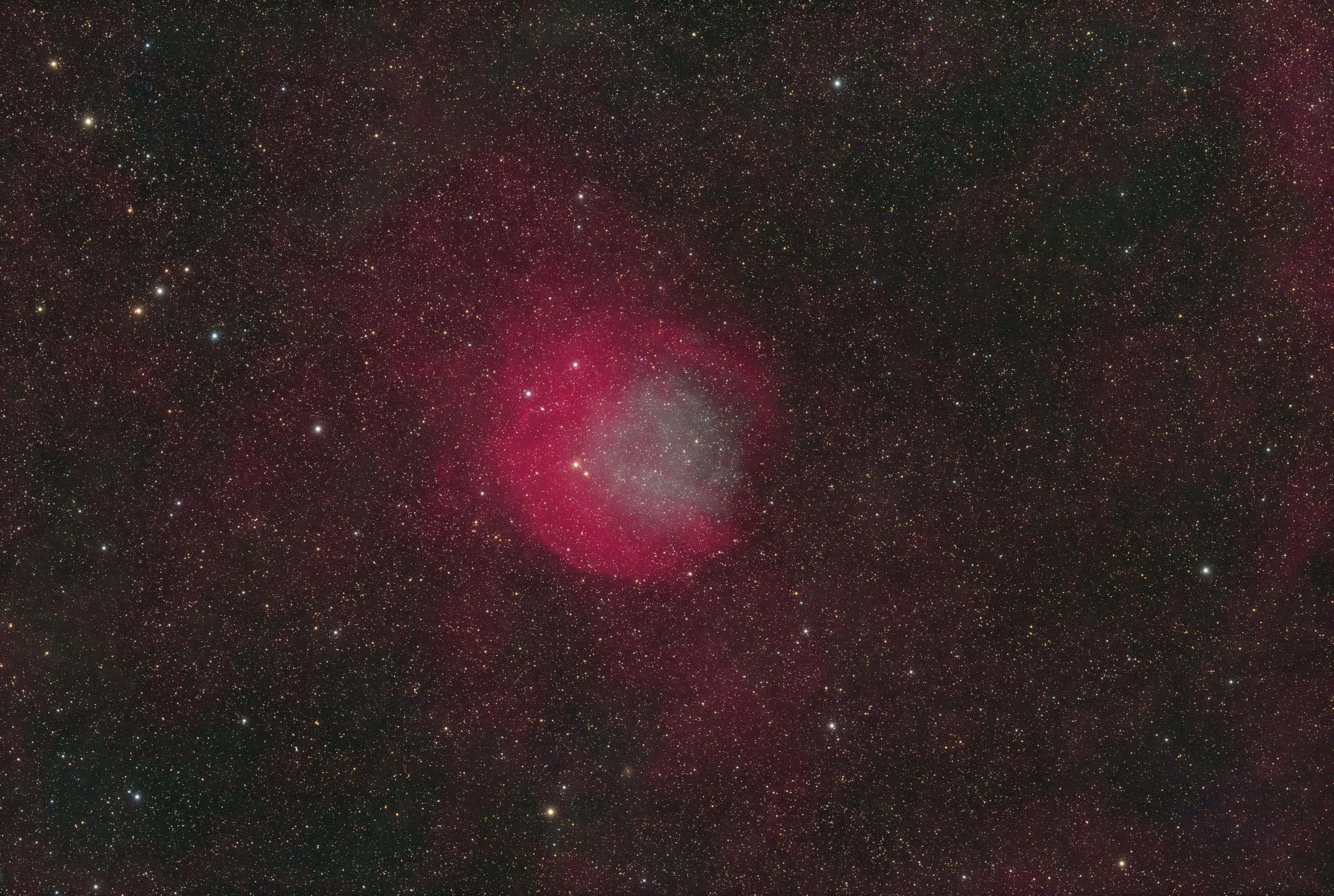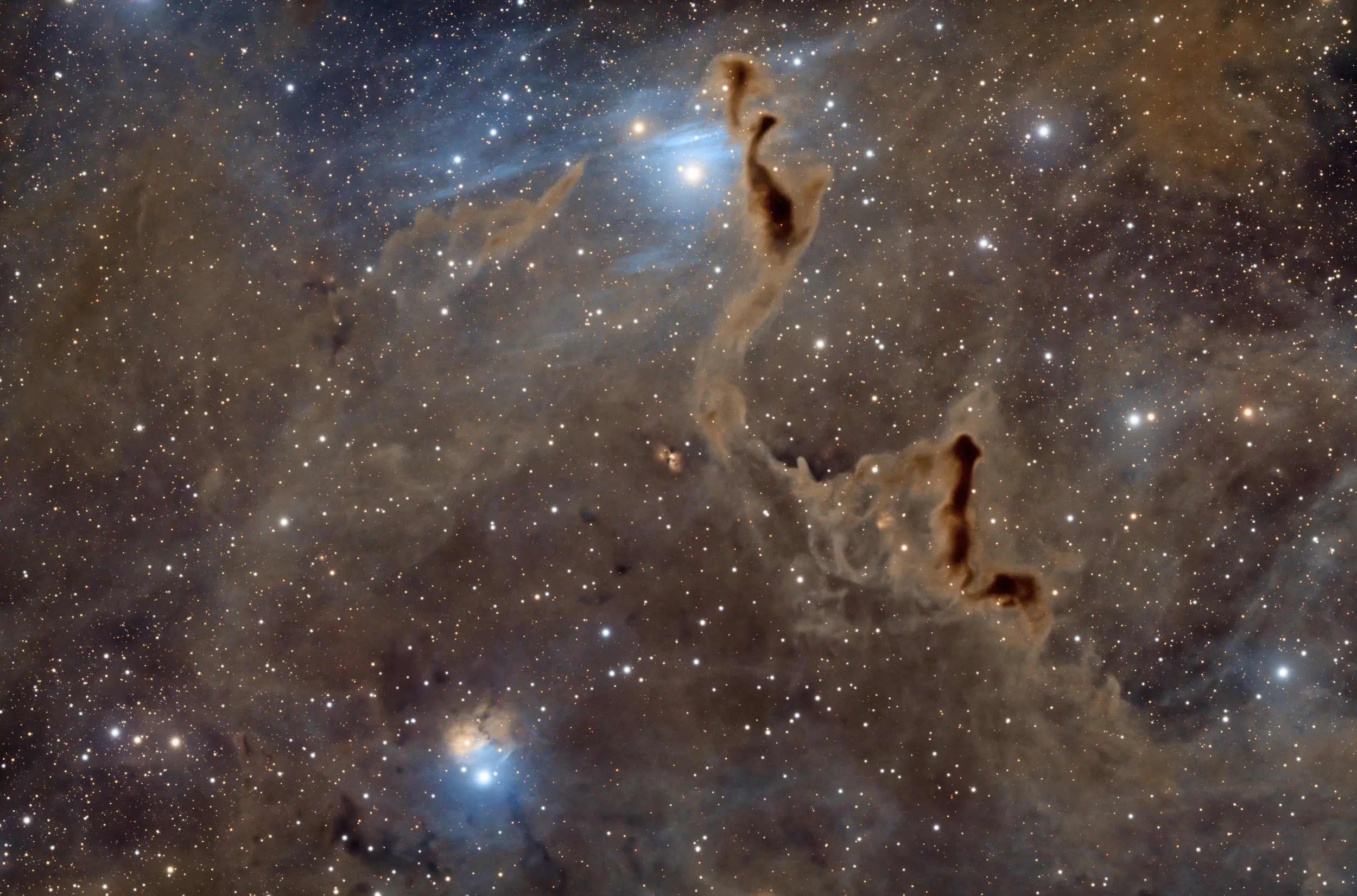
AAPOD2 Image Archives
Sort 2025 By Month: January | February | March | April | May | June | July | August | September | October | November | December
Planetary Nebula Abell 7
bell 7, renowned for its cosmic tapestry of galaxies, also harbors a hidden gem within its celestial ensemble—a planetary nebula of exquisite beauty and intrigue. Planetary nebulae, the remnants of dying stars, adorn the cosmic landscape with their ethereal glow, offering a glimpse into the final stages of stellar evolution.
Nestled amidst the galaxies of Abell 7, this planetary nebula captivates astronomers with its delicate structure and luminous hues. Formed from the outer layers of a dying star expelled into space, the nebula shines with the brilliance of ionized gases, creating a breathtaking display against the backdrop of the cosmos.
As astronomers peer deeper into the heart of Abell 7, they uncover the secrets of this planetary nebula, unraveling its origins and evolutionary history. By studying these celestial marvels, scientists gain valuable insights into the life cycles of stars and the processes that shape the cosmos. Abell 7's planetary nebula serves as a beacon of cosmic beauty and scientific discovery, inspiring wonder and awe in all who gaze upon its celestial splendor.
A Helping Hand in Cassiopeia
Image Description and Details :
This image shows a marvelous and busy area in the constellation Cassiopeia. It contains a large amount of dust, several dark nebula and several reflection nebula along with two interesting stars. Near the top center is the star SU Cassiopeiae which is a Cepheid variable at Mag 5.94. SU Cass is a Yellow giant with a spectral class of F5:lb-11. It's 19 times larger than our sun. SU Cass lies 1289 light years distant. Surrounding it is the blue reflection nebula VdB 9 which is lit up by SU Cass. The blue wisps extend quite a ways around this area. The other interesting star in the lower center left is the star RZ Cassiopeiae. RZ Cass is a white A3V main sequence star at mag 6.26. It's an eclipsing variable star which is 219 light years distant. The bluish nebulosity surrounding it is listed as VdB 7. However RZ Cass is apparently not the source to light up VdB 7 but another smaller 11th mag star nearby. Several dark nebula are right of center in the image. The upper part of this nebula looks like an opened hand, hence the nickname (The helping hand). The dark area of the hand, near the top finger is designated as LDN 1357 and below it near the palm, LDN 1355. The long dark area near center right is the dark nebula LDN 1358. Throughout this entire area encompassing the field of view is lots of molecular dust of varying thickness and color. This image was taken under the dark skies of the Okie Tex Star Party in October 2021. It encompasses 14.3 hrs of exposure time using LRGB filters.Scope: Stellarvue SVX 152T, Camera: ZWO ASI 6200mm Pro, Mount: Paramount MyTExposures: Luminance 59@300sec, Red 39@300sec, Green 38@300sec, Blue 36@300secProcessing: PixInsight
Copyright: Jonathan Talbot





